George A. Raftelis1566706807, 9781566706803
Table of contents :
Front cover……Page 1
Preface……Page 8
Acknowledgments……Page 10
Author/Editor……Page 14
Contributors……Page 16
Contents……Page 22
1.1 Introduction……Page 24
Financing Water and Wastewater Services……Page 30
Capital and Financial Planning for Water and Wastewater Utilities……Page 32
2.2 Strategic Business Planning……Page 33
2.2.1.1 Customer Demand and Economic Development……Page 34
2.2.1.3 Affordability……Page 35
2.2.1.7 Increasingly Stringent Environmental Regulations……Page 36
2.2.1.10 Community Planning and Legal Restrictions……Page 37
2.2.2.1 Mission……Page 38
2.2.2.3 Strategies……Page 40
2.2.3 Step 3: Implement a Strategic Business Planning Process……Page 41
2.2.3.3 Cross-Functional, Multilevel Strategy Groups……Page 42
2.2.3.5 Ongoing Implementation……Page 43
2.3.1.1 Major Backbone Facilities……Page 44
2.3.1.2 Water and Wastewater Extensions……Page 46
2.3.2 The Capital Planning Process……Page 47
2.3.2.3 Step 3: Determine and Schedule Capital Requirements……Page 48
2.4.1 Step 1: Develop Capital Financing Plan……Page 51
2.4.4 Step 4: Evaluate Impact on Customers……Page 54
Public Sector Financing Options – Long-Term Financing, Short-Term Financing, and Credit Enhancements……Page 60
3.2 The Evolving Tax-Exempt Market……Page 61
3.3 Alternatives to Borrowing……Page 62
3.5.1 General Obligation Debt and Limited Tax Debt……Page 67
3.5.2 Revenue Debt……Page 68
3.5.4 Double-Barrel Debt……Page 72
3.6.1 Short-Term Obligations……Page 74
3.6.1.3 TECP……Page 75
3.6.2.1 VRDO……Page 76
3.6.4.1 Fixed Rate Bonds……Page 78
3.6.5 Interest Rate Swaps, Synthetic Fixed or Variable Rate Debt, and Other Derivative Products……Page 79
3.7 Where to Borrow?……Page 80
3.7.3 State Revolving Funds……Page 81
3.7.4 Pool Funds……Page 82
3.7.9 Summary of Public Sector Financing Concepts……Page 83
4.1 Introduction……Page 86
4.2 Overview of Private Financing……Page 87
4.3.2 International Water and Wastewater Delivery Models……Page 89
4.3.3.2 Equity Financing……Page 90
4.3.4.1 Market Risks……Page 91
4.3.4.5 Financial Risks……Page 92
4.3.6 Applicability of International Finance to U.S. Communities……Page 93
4.4.1 Private Financing Approaches in the U.S…….Page 94
4.4.1.2 Private Activity Bonds (PABs)……Page 95
4.4.1.6 Tax-Exempt Corporation……Page 96
4.5 Merchant Facilities……Page 97
4.6 Assessing the Appropriateness of Private Financing……Page 100
5.1 Introduction……Page 102
5.2 Objectives of an Effective System Development Charge Structure……Page 103
5.3 Advantages and Disadvantages of System Development Charges……Page 105
5.4.1 Marginal-Incremental Cost Approach……Page 106
5.4.3 Growth-Related Cost Allocation Method……Page 107
5.4.4 Rational Nexus Test and Local Legislation Governing System Development Charges……Page 108
5.5 Growth Pays for Growth: Concept vs. Practice……Page 109
5.6.1.1 Meter Size Approach……Page 110
5.6.1.2 Equivalent Residential Unit Approach……Page 112
5.6.2 Timing of System Development Charge Assessments……Page 113
5.7 Improved Equity and Affordability for Residential Customers under an Alternative Assessment Method……Page 116
5.8.2 Credit for Debt Service……Page 117
5.8.3 The System Development Charge Team……Page 118
6.2.1 Long-Term and Short-Term Interest Rates……Page 120
6.2.2 Risk in Changing Market Conditions……Page 121
6.3.1 Legality……Page 122
6.3.4 Public Acceptance……Page 123
Alternative Delivery Methods and Public-Private Partnerships……Page 126
7.1 Introduction……Page 128
7.3 History of Private Sector Participation in the Water and Wastewater Industry……Page 129
7.4 Types of Alternative Delivery Systems……Page 130
7.4.1.2 Contract Operations……Page 131
7.4.2.1 CM-at-Risk……Page 133
7.4.2.2 DB and DBO……Page 134
7.4.2.4 Asset Lease……Page 135
7.4.2.5 Asset Transfer……Page 136
7.4.3.1 Advantages……Page 137
7.4.3.2 Disadvantages……Page 141
7.5 Why Do Utilities Consider Alternative Delivery Systems?……Page 143
7.6.1 Operational Considerations……Page 144
7.6.2 Economic Considerations……Page 145
7.6.3 Policy Considerations……Page 146
7.7 Overview of the Procurement Process……Page 147
7.7.2 Request for Proposals……Page 148
7.7.4 Proposal Evaluation……Page 149
7.8 Are Alternative Delivery Systems the Answer?……Page 150
Project Delivery Systems……Page 152
8.2 Types of Delivery Systems……Page 153
8.3.1.2 Procuring a DBB Contractor……Page 154
8.3.1.4 Advantages and Disadvantages of DBB……Page 155
8.4 Most Commonly Used Alternative Project Delivery Systems……Page 156
8.4.1.1 Overview of DB……Page 157
8.4.1.3 Procuring a DB Contractor……Page 158
8.4.1.4 Advantages and Disadvantages of DB……Page 159
8.4.1.5 DB Case Study……Page 160
8.4.2.2 Relationships among Participants under DBO Method……Page 161
8.4.2.3 Procurement of a DBO Contractor……Page 165
8.4.2.4 Advantages and Disadvantages of DBO……Page 166
8.4.2.5 DBO Case Studies……Page 168
8.4.3.3 Compensation for CM-at-Risk……Page 169
8.4.3.4 Advantages and Disadvantages of CM-at-Risk……Page 170
8.4.5 Other Alternative Delivery Methods……Page 172
8.5.1.5 Cost……Page 173
8.5.1.8 Performance Guarantee and Long-Term Warranty vs. Standard of Care and 1-Year Warranty……Page 174
8.5.3 Keys to a Successful Project……Page 175
Legal Aspects……Page 176
9.2 Legal Authority……Page 177
9.2.4 Pennsylvania……Page 178
9.2.9 Massachusetts……Page 179
9.3.1 Definitions……Page 180
9.3.3 Term……Page 182
9.3.6 Acceptance……Page 183
9.3.7.2 Maintenance……Page 184
9.3.10 Service Fee……Page 185
9.3.11 Breach and Events of Default……Page 186
9.4.3 Compensation – Permitted Arrangements……Page 187
9.4.3.3 50% Fixed-Fee Arrangements……Page 188
9.4.3.6 Public Utility Property……Page 189
9.5.4 Letters of Credit (LOCs)……Page 191
9.6.2 The Bad Faith Test……Page 192
9.8 Project Labor Agreements (PLA)……Page 193
9.9 Binding Future Boards……Page 194
9.10 Bid or Proposal Protests……Page 195
Water and Wastewater Pricing……Page 196
10.1 Introduction……Page 198
10.3 Characteristics of an Effective Pricing Structure……Page 199
10.4 Development and Implementation of a New Rate Structure……Page 201
10.5 Approach to Establishing User Charges……Page 203
10.5.1 Step 1: Identify Revenue Requirements……Page 204
10.5.3 Step 3: Design Rate Structure……Page 205
11.1 Introduction……Page 208
11.2.1 Utility Approach……Page 209
11.2.2 Cash-Needs Approach……Page 210
11.3.1 Classifying O&M Costs……Page 211
11.3.3 Indirect O&M Costs……Page 216
11.3.4 Capitalized O&M Costs……Page 217
11.3.7 Estimating O&M Costs for Future Years……Page 218
11.4 Recovering Capital Costs……Page 219
11.6 Determining Rate Sufficiency and Estimating Rate Adjustments……Page 221
11.6.1 Revenues from Specific Services Provided by the Utility……Page 227
11.6.2 Revenue From Nonoperating Sources……Page 228
12.2.1 Functionalizing Costs……Page 230
12.2.2 Allocation to Cost Categories……Page 231
12.2.3 Assignment to Customer Classes……Page 233
12.2.4 Fire Protection Charges……Page 236
12.3.1 Functionalizing Costs……Page 237
12.3.3 Assignment to Customer Classes……Page 239
13.1 Introduction……Page 242
13.2.1 Establishing an Appropriate Minimum (or Service) Charge……Page 243
13.2.2 Establishing an Appropriate Consumption Charge……Page 244
13.2.3 Fire Protection Rates……Page 250
13.2.5 Revenue Proof……Page 253
13.3.1 Establishing an Appropriate Minimum (or Service) Charge……Page 254
13.3.2 Establishing an Appropriate Commodity Charge……Page 255
13.3.3 Revenue Proof……Page 257
Conservation Pricing: An Alternative to Traditional Rate Structures……Page 258
14.2 Defining Conservation Pricing……Page 259
14.2.1.3 Surcharging and Rewarding Water Users……Page 260
14.2.1.5 Capturing Additional Incurred Costs……Page 261
14.2.1.10 Inconsistency with Legal Requirements……Page 262
14.3.1 Conservation Planning……Page 263
14.3.3 Revenue Stability……Page 264
14.4 Conservation Rate Structures……Page 265
14.4.1 Uniform Rates……Page 266
14.4.2 Inverted Block Rates……Page 268
14.4.2.1 Inverted Block Rate Case Study – Charlotte-Mecklenburg Utilities, Charlotte, NC……Page 269
14.4.3 Seasonal Rates……Page 270
14.4.3.1 Seasonal Rate Case Study – Orange Water and Sewer Authority (OWASA), Carborro, NC……Page 272
14.4.4 Marginal Cost Rates……Page 273
14.6 Interrelation of Conservation Pricing and Wastewater Rate Structures……Page 276
Other Topics……Page 280
Benchmarking Water and Wastewater Rates and Charges……Page 282
15.2.1 Geographic Location……Page 283
15.2.3 Customer Constituency……Page 284
15.2.7 Age of the System……Page 285
15.3 Survey Overview……Page 286
15.4 Survey Results……Page 287
15.4.1 General Utility Information……Page 288
15.4.2.1 Increase in Charges from the 2002 Survey……Page 289
15.4.2.2 Comparison of Charges among Survey Groups……Page 291
15.4.2.3 Residential vs. Nonresidential Comparisons……Page 293
15.4.3.2 Wastewater Rate Structures……Page 294
15.4.4.1 Meter Charges by Meter Size……Page 296
15.4.5.2 Service Extension……Page 297
15.4.6.1 Billing Cycle……Page 298
15.4.6.3 Measurement Units……Page 300
15.4.7.1 Conservation Program Elements……Page 301
15.4.8.4 Fiscal Year……Page 302
15.4.9.2 Capital Needs Trend……Page 303
15.4.11.1 Balance Sheet Averages and Ratios……Page 305
15.4.12.2 Affordability Percentages……Page 307
Valuation of Water and Wastewater Utility Assets……Page 310
16.1.1 Transaction Activity in Today’s Utility Marketplace……Page 311
16.1.2 Use of Sound Valuation Techniques……Page 312
16.2.1 Relevant Dates……Page 313
16.2.2.1 Fair Market Value……Page 314
16.2.3 Premise of Value……Page 315
16.3 Selection of Appropriate Valuation Approaches……Page 317
16.3.1.2 Multiple Period Discounting Method……Page 318
16.3.1.3 Development of the Capitalization and Discount Rates……Page 319
16.3.2.1 Direct Market Data Method……Page 320
16.3.3 Asset Approach……Page 323
16.3.3.1 Net Asset Value Method……Page 324
16.3.3.2 Excess Earning Method……Page 325
16.3.4.1 Income Approach……Page 326
16.3.4.3 Asset Approach……Page 327
16.4 Key Valuation Factors to Consider When Performing Utility Appraisals……Page 329
16.4.4 Earnings Capacity……Page 330
16.5 Conclusions……Page 331
17.1 Introduction……Page 332
17.2.1.1 Community Financial Strength……Page 333
17.2.1.2 Customer Burden Indicators……Page 335
17.2.2 EPA Affordability Criteria……Page 337
17.3.1 Cost Reduction Approach……Page 341
17.3.2 Rate Design Approach……Page 342
17.3.3 Assistance Programs……Page 343
17.3.4 Assistance Qualification Criteria……Page 344
17.4 Affordability Case Studies……Page 345
17.5 Conclusion……Page 346
18.1 Privatization Objectives……Page 348
18.3 Policy Development……Page 349
18.4 Privatization Defined……Page 352
18.5 Ownership Transfer Effects……Page 353
18.8.1 Overview of the Process……Page 354
18.8.2 Advertising and Soliciting Vendor Interest……Page 355
18.8.4 Proposal Evaluation……Page 356
18.8.6 Negotiations……Page 357
18.9 Future of Privatization……Page 358
General Information……Page 360
Project Description……Page 364
Project Contact for Further Information……Page 365
Outcomes……Page 366
Project Contact for Further Information……Page 367
Approach……Page 368
Project Description……Page 369
Outcomes……Page 370
Project Contact for Further Information……Page 371
Appendix C: Water and Wastewater Survey Results……Page 372
Appendix D: Survey of Water and Wastewater Affordability Programs……Page 388
Appendix E: 10 USC 2688……Page 398
A……Page 402
B……Page 403
C……Page 404
D……Page 409
E……Page 410
F……Page 411
G……Page 412
H……Page 413
I……Page 414
L……Page 415
M……Page 416
N……Page 417
O……Page 418
P……Page 419
R……Page 421
S……Page 424
T……Page 426
U……Page 427
W……Page 428
Z……Page 429
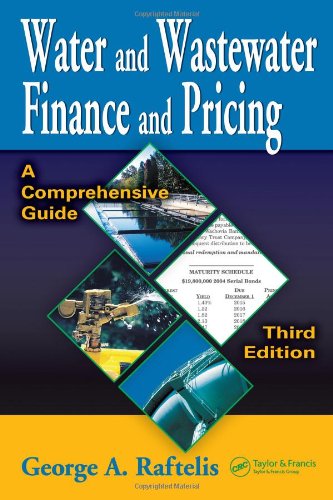
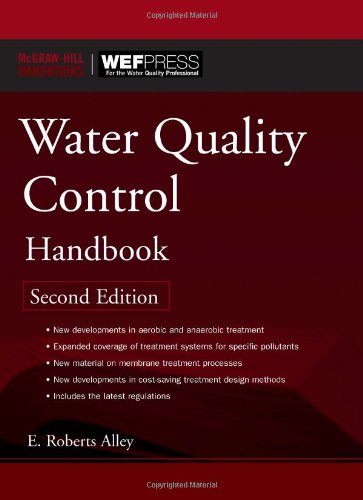

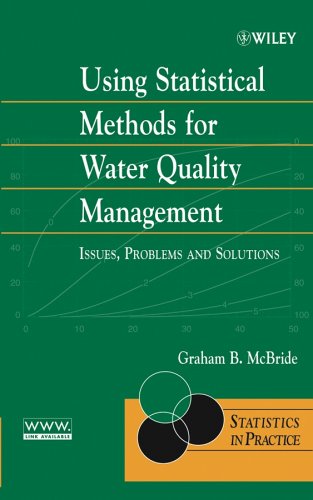
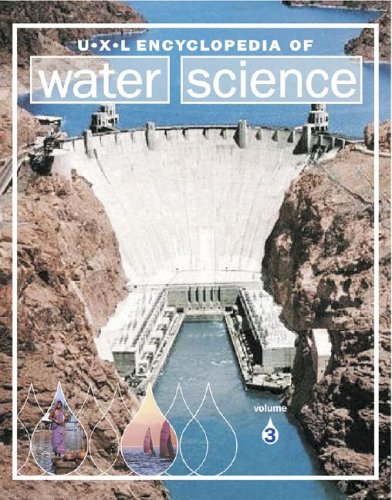

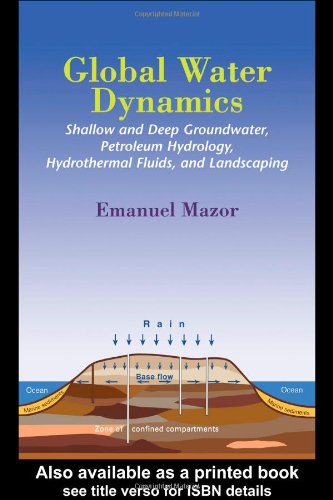
Reviews
There are no reviews yet.